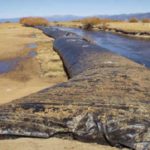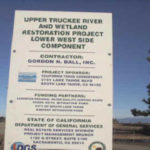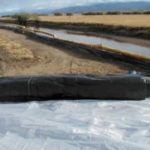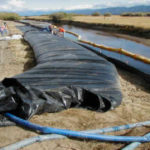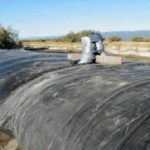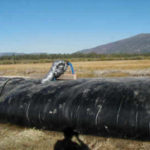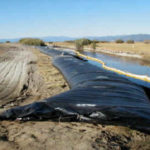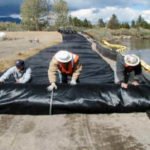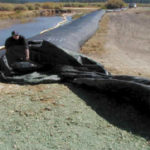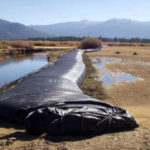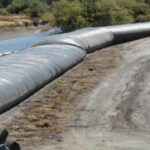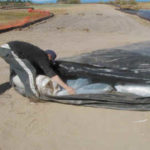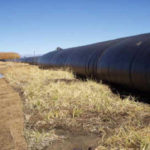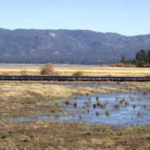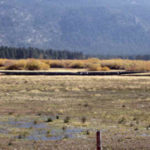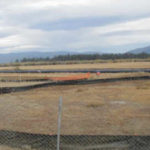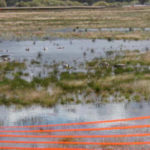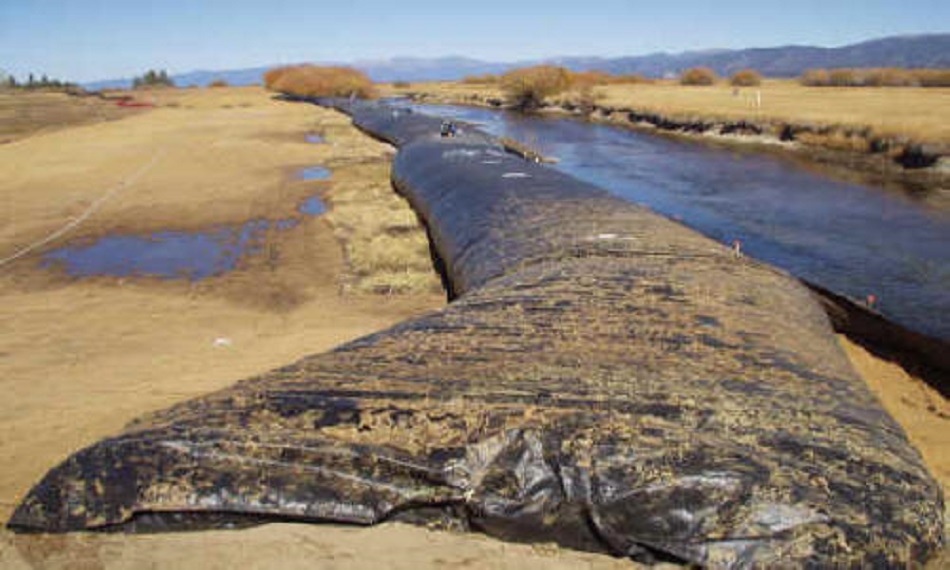
1,200 linear feet of double-ply 4' high AquaDams were installed in three different locations to prevent erosion during wetland restoration. Due to anticipated high water flows in the adjacent Upper Truckee River, preventing eroded sediment from entering Lake Tahoe was a priority.
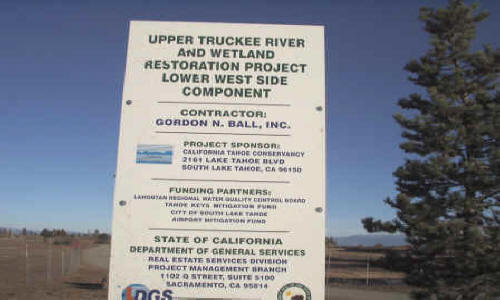
The Lake Tahoe water authority is the most restrictive in the nation when it comes to water quality issues. This sign displays the government representatives associated with this project. Water quality was the top priority in the creation of these wetlands during the restoration process.
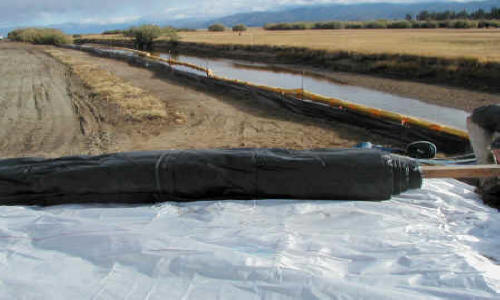
The first AquaDam at location #1 is laid out and unrolled. Fill hoses are inserted into the fill tubes and filling begins. The idea is to isolate anticipated high water flows in the Upper Truckee River from the newly-created adjacent wetlands. Considerable expense has gone into grading and seeding the reclaimed areas.
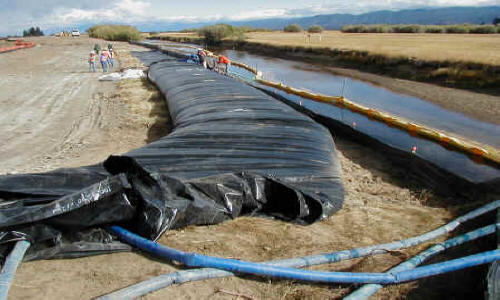
Once the first AquaDam is filled, another is put in place at the closed end and attached using a coupling collar. It is then rolled out and laid in position just like the first. Placement was critical, as the AquaDams had to be as close to the Truckee River as possible. The brown grass alongside the AquaDam is imported sod and is very expensive.
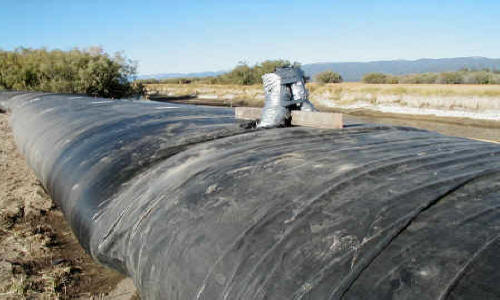
A view of the fill tubes of the attached AquaDam. The fill tubes come up through holes in the coupling collar that is attached to the end of the previously installed AquaDam. After filling, the fill hose can be removed, and the ends are secured in an upright position with duct tape to ensure that no water drains out. A 4" x 6" section of the wooden core the AquaDam came rolled up on has been inserted between the tubes to help hold them up.
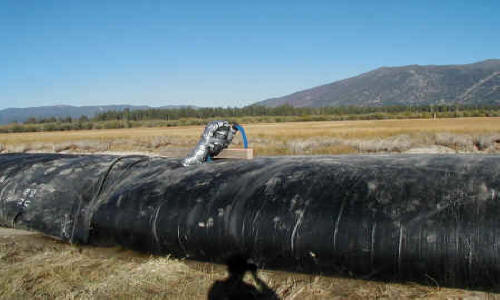
This AquaDam connection still has a blue fill hose inserted into its fill tubes so that it can be easily topped off by adding more water. These AquaDams are meant to be here for many years, so the duct tape will also protect the fill tubes from the sun's harmful UV rays.
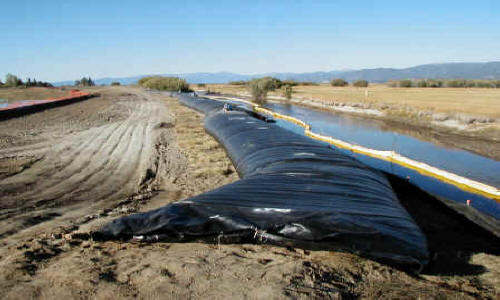
A view from the start of location #1, looking along the length of the multiple 100' long AquaDams. They have been connected together to make a continuous 400' barrier. The nearby river provides easy access to water to refill the AquaDams.
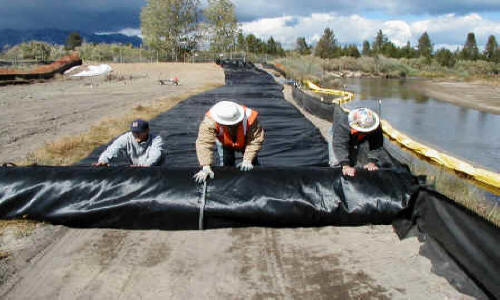
This 4' high x 200' long AquaDam was started from the bank at work site #3. The AquaDams are unrolled by hand and then inflated with water. This way they can be placed in the desired location next to the silt fence. You can see the elevation difference of the far bank where the AquaDam starts. This bank will hold the water inside the AquaDam.
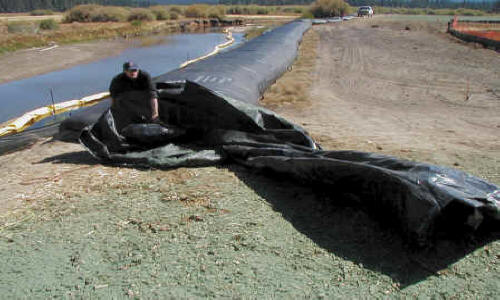
The start of the 4' AquaDam at location #3. The steepness of the bank cannot be seen from this angle. The worker is rolling the fill tubes so that they can be placed inside the outer sleeve to help protect them. They are left long so that if there is ever a need, they can be used to connect this unit to the end of another AquaDam using a coupling collar.
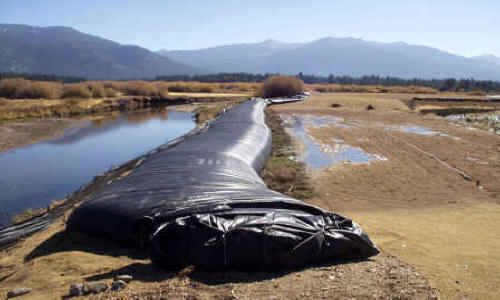
The extended inside tubes are rolled up, tied off, and tucked into the outer sleeve of the AquaDam, which is then tied shut. Coir mats and seeding have all taken place, and now time has to pass to allow things to grow. The AquaDam will be periodically opened up and recharged with water.
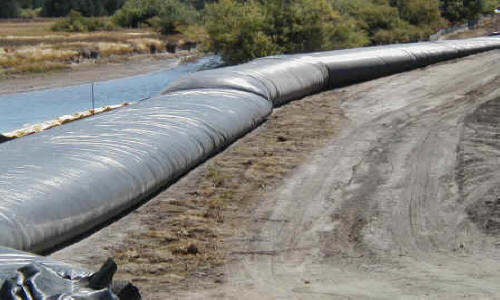
This is location #2, which is approximately 150' in length. Two 4' high AquaDams abut into one another from opposite directions. This way, both AquaDams can be easily filled from their open ends. The dam on the right is over-inflated to approximately 5' in height.
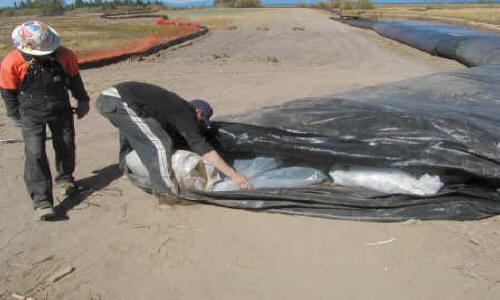
The fill tubes of the over-inflated AquaDam are rolled up and tucked inside the outer sleeve. Notice how the other end gets smaller as it extends up the slope of the bank.
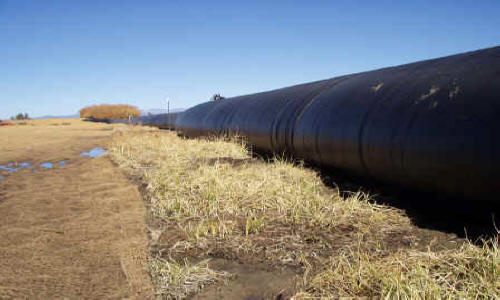
The sod has grown quite a bit in the month since the AquaDams were first installed. The coir matting has not yet produced any sprouts.
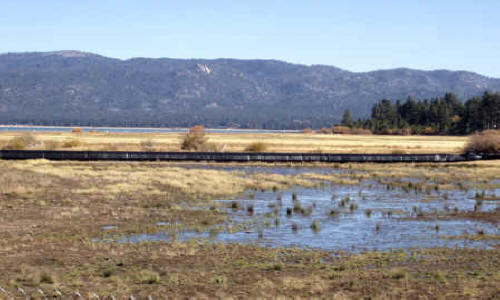
Looking across the newly created wetlands at location #3. All of these AquaDams were installed in 2 days.
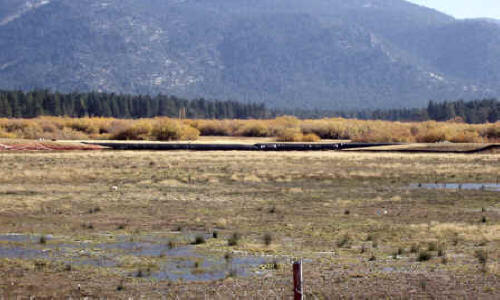
An overview of location #2. You can see the bulge of the overfilled AquaDam.
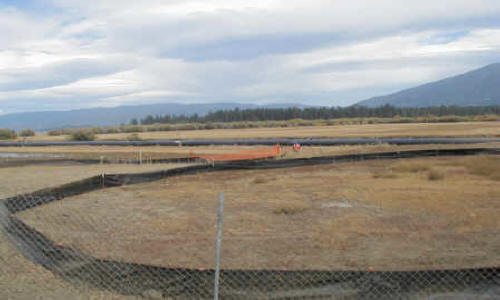
The 400' long section of AquaDam can be seen in the background of this picture, looking across the newly created wetlands. The AquaDams are providing high water protection from the Truckee River so that the loose fill material will not erode into Lake Tahoe.
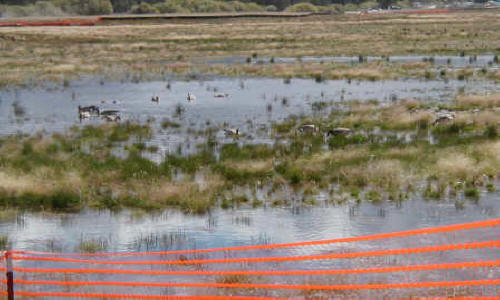
Happy Canadian geese have already found their spot in the newly created wetlands. A little bit of water goes a long way in providing the ideal habitat for many of nature's aquatic creatures.
